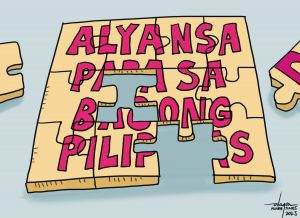Hardly talked about in social media or reported by mainstream media is that September 21 is the International Day of Peace.
“Today peace faces a new danger: the climate emergency, which threatens our security, our livelihoods and our lives.” – United Nations Secretary General António Guterres said in a statement.
The Climate Change Act of 2009 requires all local government units to craft an action plan that will ensure the adaptive capacity and resilience of communities to the impact of climate change. More than being a requirement of the law, creating an action plan should be a moral responsibility for local leaders.
I looked back over my reportage in just a couple of years, and sadly, I lost count of the times I cried profusely due to the accounts of victims of disasters as those who survived lived to tell their stories.
In late 2011, a severe Tropical Storm Washi, known in the Philippines as Tropical Storm Sendong, was a tropical cyclone that caused a catastrophic damage in the Philippines, killing about 1,400 PEOPLE, many of them living along the riverbanks in the cities of Cagayan de Oro and Iligan.
But prior to that disaster, Davao City also saw itself as a victim of a similar incident. In June of that year, an overnight of rain, which was estimated to be equal in volume to an average monthly rainfall, hit the city and caused a massive flooding, killing 25 people, many of them children who were past asleep, and destroying properties.
Alex Baricuatro, a survivor of that incident who was a picture of an inconsolable man, cried as he told reporters: “I could not save them.” Baricuatro lost his wife and three children.
In December 2012, Typhoon Pablo (International name: Bopha) made a landfall in the provinces of Davao Oriental and Compostela Valley, killing scores of people who drowned in flood and the rampaging landslide. Before that, most young people in this part of Mindanao did not experience such a disaster.
Among those who survived that tragedy was Imee Sayson, 7, who was rescued as half of her body was submerged in floodwater nearly 24 hours after the typhoon hit her village in New Bataan, the most devastated part of Compostela Valley.
“I am hungry,” was what the young girl could just say after she was rescued. Sadly, she died due to hypothermia and internal bleeding while being brought to a nearby hospital.
A year later, Yolanda, the super typhoon which experts said the most powerful one to have hit the country as it was packing a 315 kilometer an hour of winds, brought with it storm surge and heavy rains that devastated many areas in the Eastern Visayas. About 7,000, or more depending on who was asked, perished with many of them have been missing until today.
Even then Tacloban City mayor Alfred Romualdez said he had to destroy the ceiling of his two-floor house, as water was fast rising, so he and members of his household could swim to safety.
The next day when he surveyed his city, almost everyone he met was a picture of devastation.
“Mayor I lost everyone in my family; there’s no one else left,’ he recalled residents telling him.
Have we learned so far from these catastrophic experiences? Have our communities ready and prepared for devastating calamities like these which could strike any moment?
Climate emergency threatens lives and impacts on livelihood and security of the communities. We need to be prepared.


